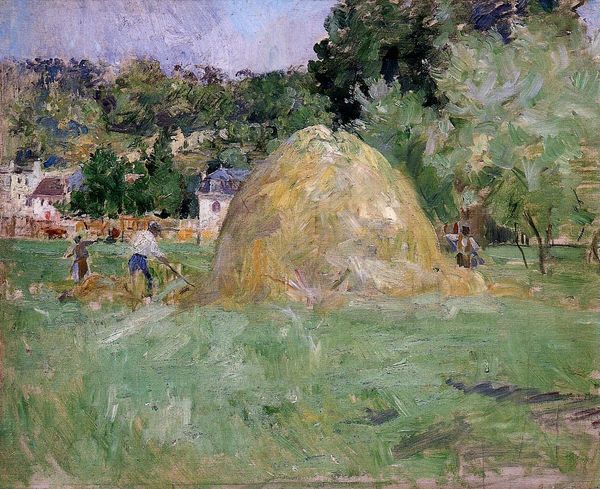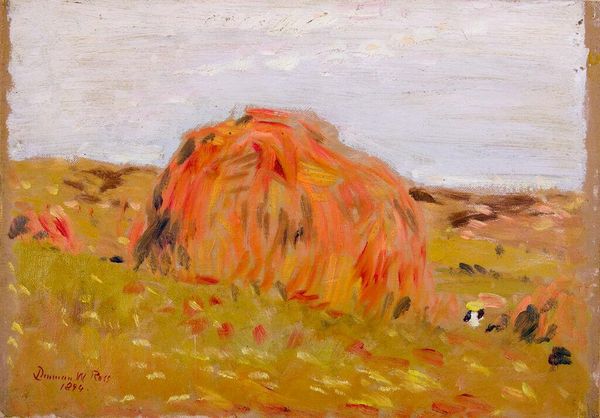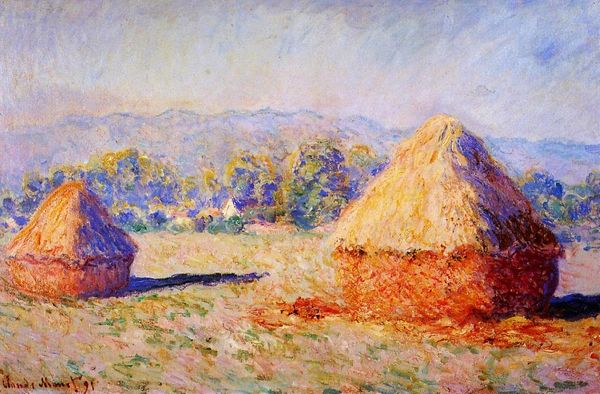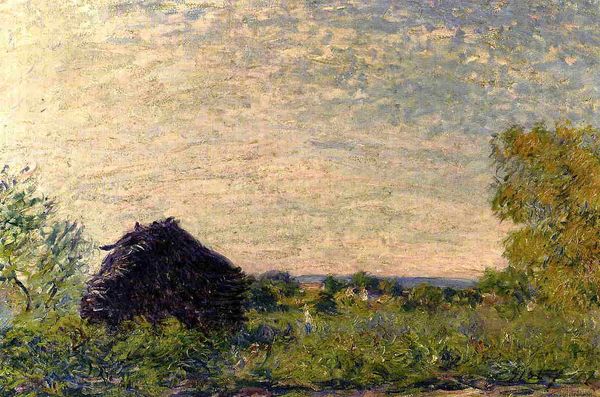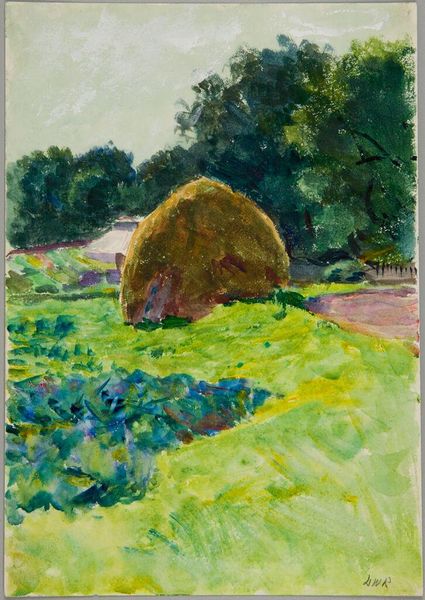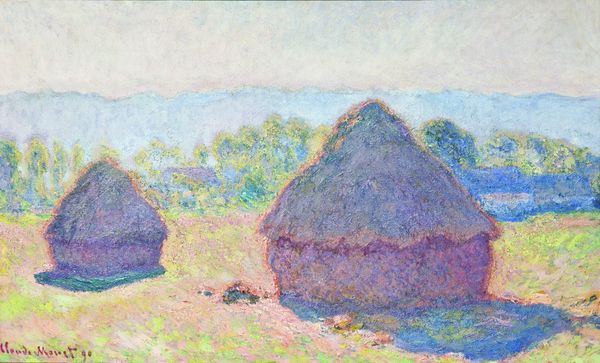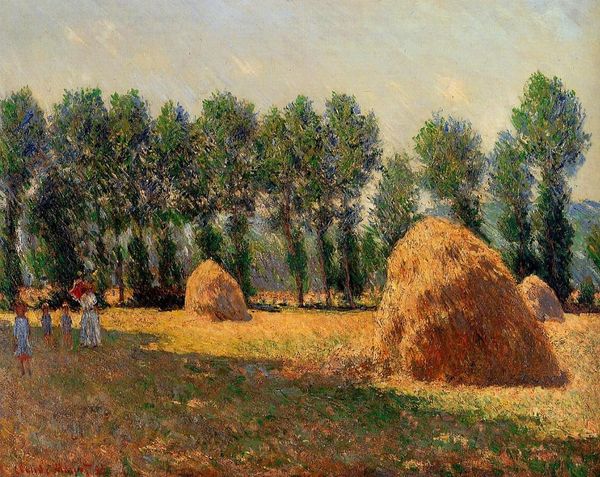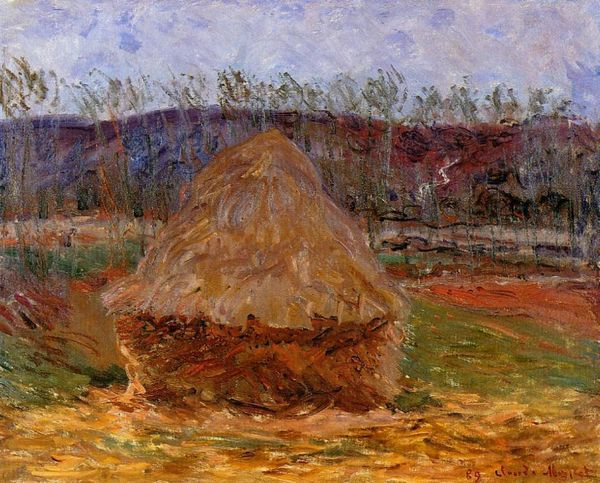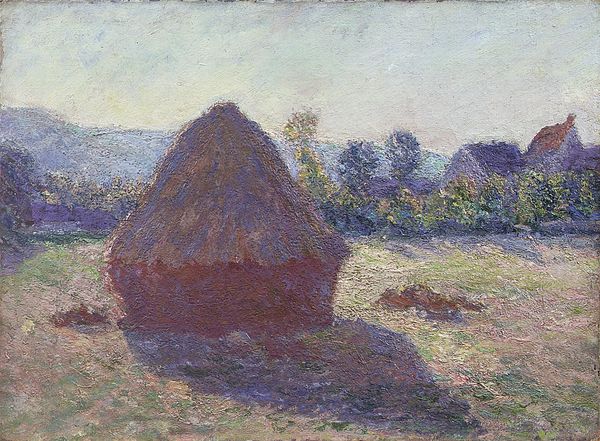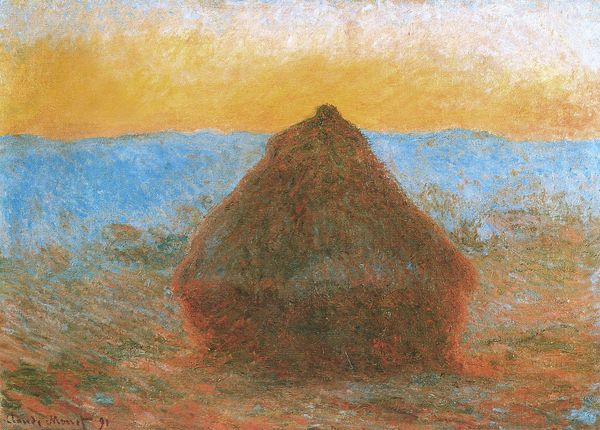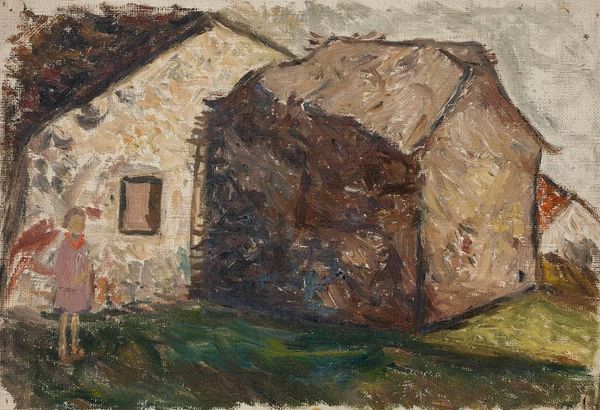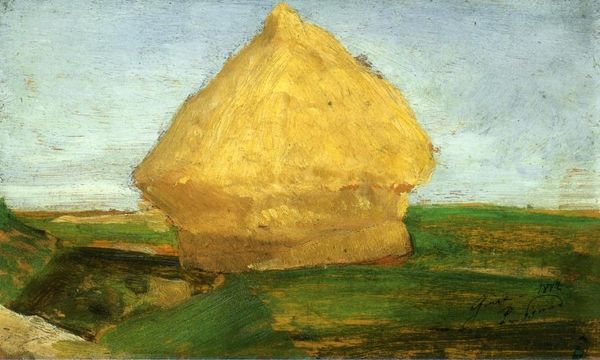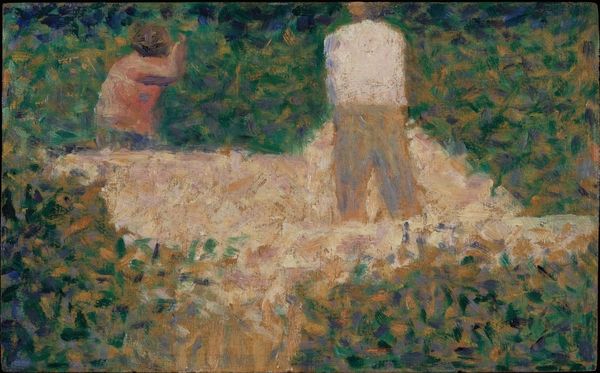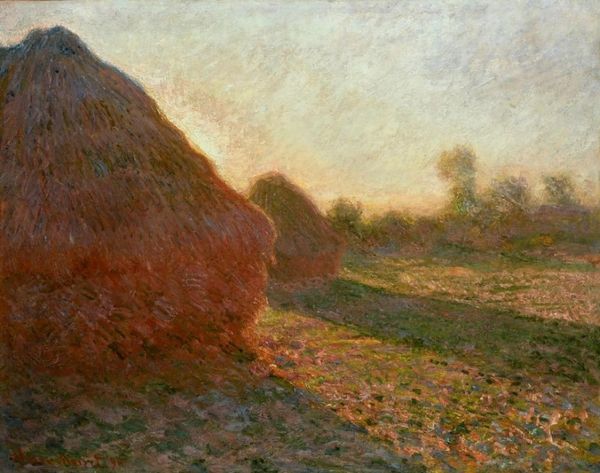
painting, plein-air, oil-paint, impasto
painting
impressionism
plein-air
oil-paint
landscape
impressionist landscape
oil painting
impasto
france
genre-painting
post-impressionism
realism
Copyright: Public domain
Editor: So, this is Berthe Morisot's "Haystack," painted in 1883 using oil on canvas. The immediate feeling is one of soft light and airiness. The haystack itself, despite its size, seems to blend with the surrounding landscape. What do you see in this piece that I might be missing? Curator: Consider the way Morisot orchestrates the formal elements. Note the juxtaposition of the impastoed haystack against the flatter, more diffused handling of the surrounding field and sky. The structural rigor is softened by a delicate, almost ephemeral, palette. Is the haystack merely a subject, or does it function as a compositional anchor? Editor: That’s a great point, I hadn't considered how deliberately the impasto contributes to that anchor. The texture really does draw your eye. The eye bounces between it, and then sort of wanders throughout the rest of the image because it is much less aggressive. It has the most visual weight. Curator: Precisely. The relationship between the texture of the impasto and its chromatic variations creates a powerful tension. Notice the strategic use of complementary colors-- how greens interplay with yellows and earth tones, lending vibrancy. Also the figures, which she places slightly behind and to the right of the Haystack: why might Morisot make that choice rather than placing the figures center? Editor: I imagine she did that to add visual interest and compositional balance, right? If the figures were centered it would shift from a landscape to more of a genre scene. It would change the dynamics and message of the painting. Curator: Indeed, you can feel her playing with the semiotics and the way it changes meaning through that strategic placement, it’s that push and pull between structure and freedom which makes this work particularly compelling. Editor: It’s amazing how much one can uncover simply by looking at color, form, and the use of impasto. I'll definitely pay more attention to those elements moving forward! Curator: And by attending to the nuanced visual language of a work, we may begin to understand its significance within a broader cultural landscape.
Comments
No comments
Be the first to comment and join the conversation on the ultimate creative platform.
